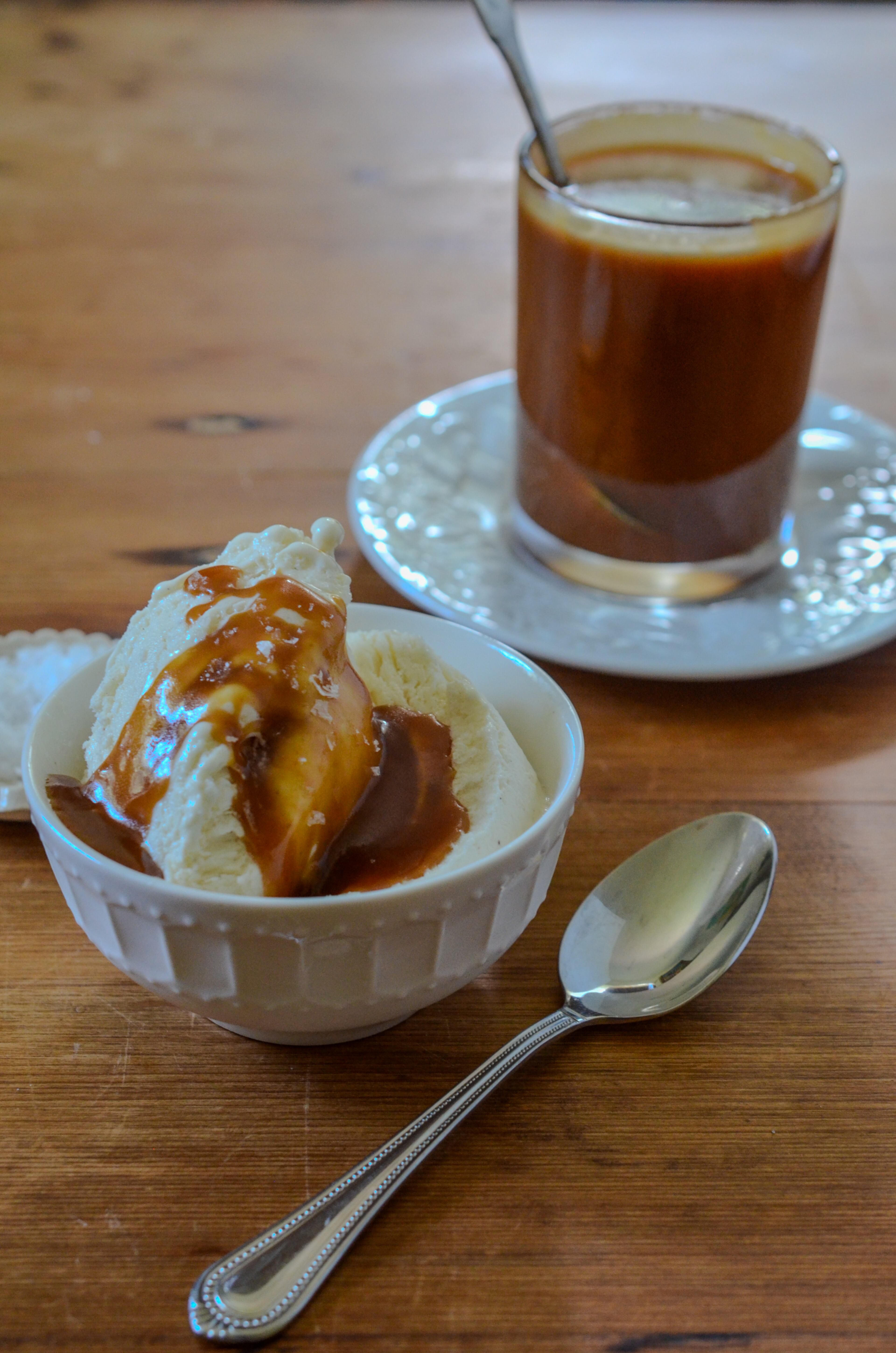Recipes worth their salt

In the kitchen, salt is taste, texture and technique. Salt enhances the flavor of food, can change the consistency of food and is used in culinary applications such as brining. Salt is indispensable to food and cooking.
Salt is sodium chloride, a combination of 40% sodium and 60% chloride. Our bodies require a small amount of sodium for nerve health, muscle control and to maintain the proper balance of water and minerals. It is estimated that we need about 500 milligrams of sodium daily for these vital functions. To put that in perspective, 1 teaspoon of table salt contains about 2,400 milligrams of sodium.
Americans typically consume too much salt, leading to issues with high blood pressure, heart disease and stroke. When you use salt, you want to use it judiciously and effectively. Understanding the types of cooking salt and their effect on food will help you put them to best use.
What are the three main types of cooking salt?
Kosher salt is a coarse-grained salt made from salt crystals. Kosher salt’s original purpose was really to kosher meat, meaning to remove the blood from meat. The top two brands of kosher salt are Diamond Crystal and Morton’s.
Table salt is a fine-grained crystal and is what you’ll find in saltshakers and salt packets everywhere. Iodized table salt contains added iodine to help prevent iodine deficiency and thyroid problems.
Sea salt is a general term for salt produced by evaporation ocean water or saltwater lakes. It retains trace minerals that add flavor and color. Sea salt varies texture depending on origin and harvest method. Finishing salts are sea salts are prized for their unique qualities and are meant to be sprinkled on food.
Table salt (or fine sea salt) is most often used for seasoning and baking. Kosher salt is used for general cooking. And, sea salt, depending on the price point, can be used for general cooking or as a finishing salt.
How does salt affect flavor?
Salt is not just salty. Salt enhance sweetness, suppresses bitter flavors and rounds out overall flavors. Not enough salt and food is bland.
How does salt affect texture?
Salt affects the texture of food on two levels: the texture of the salt crystal as with finishing salts as well as how it reacts with the cells, changing the texture of the food. Some sel gris, a French sea salt with large grey crystals is so coarse it’s almost pebbly. Maldon salt is a famous pyramid-shaped salt from England that shatters when consumed. There’s historical evidence that humans have been harvesting salt there for thousands of years. (Maybe an enterprising Neanderthal cook sprinkled some of those famously crunchy crystals on a freshly grilled slab of mastodon.)
The texture of vegetables is made limp by salt. Salt breaks down the cell walls and extracts moisture, making the vegetable less firm through a process called osmosis. Sprinkled on the surface of a vegetable, the salt creates a higher ion concentration at the surface of the vegetable. Water then travels from within the vegetables to the surface to create equilibrium. This is what breaks down cabbage and makes eggplant soft when salted for grilling.
What is brining?
Brining is a process that changes the texture of a protein. A wet brine is the soaking of meat, poultry or shellfish in a saltwater solution. (Typically, red meat is not brined as the salt reacts differently with the muscle fibers in beef and lamb.) A dry brine is when meat is heavily salted, bringing the internal moisture to the surface, that is then reabsorbed.
With both dry and wet brining, salt causes the food proteins to form a complex mesh that traps the brine, causing the muscle fibers to absorb additional liquid during the brining period. Some of this liquid is lost during cooking, but since the meat is “juicier” to begin with, it cooks up juicier at the end. (I like to think of it as a cup filled “over the rim.”)
There’s no hard-and-fast rule for brining. But, the more concentrated the brining solution and the smaller the piece of meat, the shorter the brining period. Common sense dictates that a 12-pound turkey is going to take more time to brine than a pound of chicken.
It’s easy to plan an overnight brine for a holiday turkey, but who has time to do the same for the main course of a weeknight supper? For smaller pieces of meat, my philosophy is to use a strong brine that takes an hour or less.
With good reason, too much salt can lead to health concerns. Choose your salt carefully and use it wisely.
RECIPES
Celebrate the wonders of cooking salt with this trio of recipes. Brined Pork Chops with Prunes and Rosemary are brined in coarse kosher salt. Yamitsuki is made from cabbage wilted with table salt. And Salted Caramel Sauce is both made and finished with flaky sea salt.

Brined Pork Chops with Prunes and Rosemary
For a quick brine, use 1/4 cup of kosher salt to 1 quart of water, including the ice. The brine must be chilled before the meat is added for food safety.
You can apply this quick brine formula to any white meat as well as seafood. In this instance, we’re using boneless pork chops.
The dish gets added flavor from prunes and rosemary. Feel free to substitute another dried fruit such as apricots or fresh fruit such as apples or peaches. Fresh thyme can also used instead of rosemary.
- ¼ cup kosher salt
- 2 cups boiling water
- 3 cups ice cubes
- 4 center-cut boneless pork chops, ¾ inch thick (about 2 pounds)
- ½ teaspoon freshly ground black pepper
- ½ cup white wine or chicken stock
- 8 pitted prunes
- 2 sprigs fresh rosemary
- Place the salt in a heatproof bowl. Pour over the boiling water and stir to dissolve. Add the ice and stir to cool. Add the pork chops, cover the bowl and refrigerate for about 30 minutes. Remove the meat from the brine, rinse well, and pat dry with paper towels. (Do not brine any longer than 30 minutes or the pork chops will be too salty.)
- Heat the oven to 400 degrees. Season the pork chops with pepper. Spray a large skillet with nonstick spray. Heat the skillet over medium-high heat. Add the pork chops and sear, about 2 minutes per side. Transfer the pork chops to a plate. With the heat still on medium-high, add the white wine, prunes and rosemary to the skillet. Stir with a wooden spoon to deglaze the pan and loosen any browned bits. The mixture should come to a boil immediately.
- Return the pork chops to the skillet and transfer to the oven. Cook until the temperature reads 155 degrees on an instant-read thermometer, 8 to 10 minutes. Remove to a warmed serving platter. Tent with foil to rest and let the juices redistribute, about 5 minutes. Serve immediately.
Serves 4.
Per serving: 372 calories (percent of calories from fat, 24), 52 grams protein, 13 grams carbohydrates, 8 grams total sugars, 1 gram fiber, 9 grams total fat (3 grams saturated), 143 milligrams cholesterol, 425 milligrams sodium.

Japanese Salted Cabbage (Yamitsuki)
For this Japanese side dish, cabbage is tossed with salt, softening the cabbage and making it more receptive to a special blend of seasonings. This creates a potent combo of taste and texture. Yamitsuki lives up to its name, which means “addictive” in Japanese.
- ½ pound green cabbage, chopped in 1-inch pieces
- ½ teaspoon table salt or fine sea salt
- 4 cloves garlic
- 1 tablespoon toasted sesame oil
- 1 tablespoon roasted white sesame seeds
- 1 teaspoon chicken or mushroom bouillon powder or paste
- Put the chopped cabbage in a very large bowl and sprinkle with salt. Toss thoroughly with your hands to evenly coat. Let the cabbage sit for 10 minutes.
- While the cabbage is resting, make the paste. Combine the garlic, oil, sesame seeds and bouillon in the bowl of a mini-prep food processor or mortar and pestle. Pulse or pound until smooth.
- Drain any liquid from the cabbage. Add the paste and toss to coat. If time allows, set aside for the flavors to marry, about 15 minutes. Otherwise, serve immediately — it’s addictive either way. Serve at room temperature or chilled. Store refrigerated in an airtight container for 5 to 7 days.
Serves 4.
Per serving: 69 calories (percent of calories from fat, 65), 1 gram protein, 5 grams carbohydrates, 2 grams total sugars, 2 grams fiber, 5 grams total fat (1 gram saturated), trace cholesterol, 313 milligrams sodium.

Salted Caramel Sauce
Now copied (and bastardized) in coffee shops and dessert cafes around the world, salted caramel sauce originated in Brittany, France. The richly bittersweet and luxurious sauce is traditionally made with fleur de sel Guerande or “flower of the sea.” A thin, delicate crust of salt crystals forms on the surface of the seawater when the wind, weather, and sun are just right. It has been hand-raked and harvested in the same manner for centuries.
- 1 cup sugar
- ½ cup water
- Juice of half lemon
- ½ cup (1 stick) unsalted butter
- ½ cup heavy cream
- 1 tablespoon pure vanilla extract
- Pinch of flaky sea salt such as fleur de sel Guerande or Maldon, plus more for serving
- In a heavy saucepan, combine the sugar, water and lemon juice. Heat over low heat, swirling the pan occasionally, until the sugar dissolves. Increase the heat to high and bring to a boil. Continue to boil, without stirring, until the syrup begins to turn golden around the edges. (It is important not to stir, otherwise the syrup may crystallize).
- Meanwhile, combine the butter and cream in a small saucepan. Heat over low until the butter melts. Keep warm.
- When the syrup begins to color, lower the heat, and continue boiling until it turns a deep golden color. It will darken rapidly. Remove the pan from the heat and add the butter-cream mixture. (Be very careful because the syrup will furiously bubble up in the pan.) Return the pan to the heat and stir until the mixture is smooth and well-combined. Add the vanilla and salt. Stir to combine.
- Serve warm or at room temperature over ice cream, as a dessert sauce or as a dip for fruit. For an extra pop of flavor, sprinkle additional sea salt on top of the sauce when serving.
- Store the sauce in an airtight container in the refrigerator for up to 1 month; it will solidify. Reheat it in a heavy saucepan over very low heat before using.
Makes about 1½ cups to serve 12.
Per 2-tablespoon serving: 164 calories (percent of calories from fat, 58), trace protein, 17 grams carbohydrates, 17 grams total sugars, trace fiber, 11 grams total fat (7 grams saturated), 33 milligrams cholesterol, 17 milligrams sodium.
More Stories
Keep Reading


